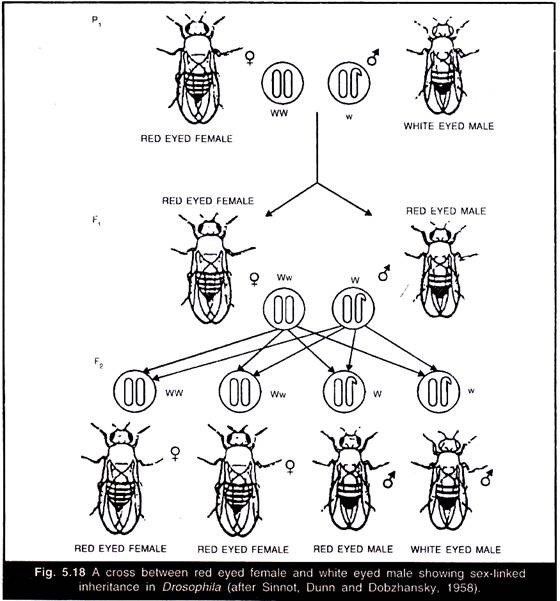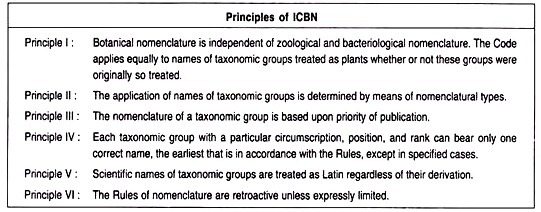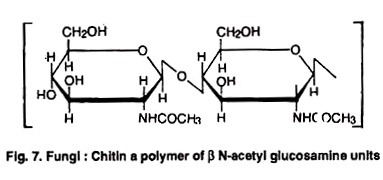ADVERTISEMENTS:
The chromosomes present in the diploid cells of the majority of the sexually reproducing animals are of two types: autosomes bearing genes for somatic characters and sex chromosomes bearing genes for sex.
Sex chromosomes also carry some genes for non-sexual characters such as colour blindness and haemophilia.
Such genes which are always associated with sex chromosomes are called sex-linked genes. In man and Drosophila the sex chromosomes (X and Y) are unequal in size and shape, X being larger and rod shaped whereas Y is small and slightly curved. In birds and butterflies the sex chromosomes (Z and W) are also unequal in shape and size, Z being larger than W.
ADVERTISEMENTS:
In Mendelian pattern of inheritance, the genes for contrasting characters were located on autosomes but not on the sex chromosomes. Secondly, the result of reciprocal cross is same as normal cross which is not the case with sex linked inheritance. There are three types of sex-linked genes depending upon their association with particular chromosome.
They are as follows:
(i) The genes which are located on X-chromosomes are called X-linked genes or sex linked genes.
(ii) The genes which are located on Y chromosomes are called Y-linked genes or holandric genes.
ADVERTISEMENTS:
(iii) Certain genes are found to occur in both X and Y chromosomes. Such genes are called incomplete sex-linked genes.
In order to understand the inheritance of character present in sex chromosomes, let us understand transmission of X-chromosome from male individual in Drosophila or in man. The X-chromosome from male individual will always pass to the daughter, while X-chromosomes from female individual will be distributed equally among the daughter and sons (Fig. 5.17).
 A character from the father goes to the daughter (F1) and then from daughter to grandson in the next generation (F2). Such type of inheritance is also called as criss-cross inheritance. In this type of inheritance result of the reciprocal crosses are not identical as in case with Mendelian crosses.
A character from the father goes to the daughter (F1) and then from daughter to grandson in the next generation (F2). Such type of inheritance is also called as criss-cross inheritance. In this type of inheritance result of the reciprocal crosses are not identical as in case with Mendelian crosses.
Sex-Linkage in Drosophila:
T.H. Morgan (1910) for the first time discovered sex-linkage in Drosophila melanogaster. Morgan when experimenting noted the sudden appearance of one white-eyed male (mutant form) in the culture of normal red-eyed Drosophila. This white-eyed male was crossed with red eyed female. The F1 flies (both male and female) were all red-eyed indicating that white eye colour is recessive to the normal red eye colour.
When these F1 flies were inter-crossed freely, the red-and white-eyed flies appeared in the ratio 3: 1 in the F2 generation. White- eyed flies were male. Among the red eyed flies two-third were female and one-third were male. The females were all red eyed whereas 50% males were white eyed and the remaining 50% males were red eyed (Fig. 5.21).
If a reciprocal cross is performed between white eyed female and red eyed male individual, all female individuals in Ft generation are red eyed and all male individuals, are white eyed. When these two types of individuals from F1 generation are inter crossed, female population in F2 generation will consist of 50% red eyed and 50% white eyed individuals. Similarly the male population in this generation consists of 50% red eyed and 50% white eyed individual (Fig. 5.19).
The inheritance of white-eye colour in Drosophila can be explained on the basis of the following assumptions:
ADVERTISEMENTS:
(i) Gene for white eye colour in male Drosophila is located in X-chromosome and Y chromosome is empty, carrying no normal allele for eye colour.
(ii) In white eyed female Drosophila there are two X chromosomes, each one bearing a gene for white eye colour (w). It transmits one gene for white eye colour (w) to each offspring.
(iii) As we can see in the above reciprocal crosses, the gene for recessive white eye colour (w) passes by father on to daughter (F1 generation). The daughter in turn passes this gene to her sons (F2 generation). The character thus seems to alter or cross from one sex to the other in its passage from generation to generation. In other words, character is transferred from mother to son and never from father to the son.
Characteristics of Sex Linked Inheritance:
(a) It is a criss-cross inheritance as the father passes its sex-linked character to his daughter who in turn passes it to the grandson.
ADVERTISEMENTS:
(b) Daughter does not express the recessive trait but act as carrier in the heterozygous condition.
(c) Female homozygous for recessive trait expresses the trait.
(d) Any recessive gene borne by the X chromosome of male is immediately expressed as Y chromosome has no allele to counteract.
Sex Linkage in Man:
In man about fifty six sex-linked genes have been reported, the most common examples are:
ADVERTISEMENTS:
1. Red green colour blindness.
2. Haemophilia.
1. Red Green Colour Blindness:
Colour blindness is an example of sex linked character. Those who suffer from red green colour blindness cannot distinguish between red and green colour. The gene for this defect is located on X chromosome. It was first studied by Horner (1876). Colour blindness is recessive to normal vision.
ADVERTISEMENTS:
(i) Normal Woman and Colour Blind Man:
When a normal woman is married to a colour blind man, their children (daughters and sons) have normal colour vision. But when their daughters were married to normal man, 50% of their sons are colour blind and the remaining 50% are normal, while the daughters were all normal.
(ii) Colour Blind Woman and Normal Man:
If a colour blind woman marries a normal man, their daughters are normal but all their sons are colour-blind. When these F1 daughters are married to colour blind men, colour blind sons and daughters are born in equal number.
2. Haemophilia (Bleeder’s Disease):
Haemophila is another popular example of sex linked inheritance in human beings. It is caused by a mutant gene (h) present in X chromosome and recessive to normal gene and is, therefore, suppressed in heterozygous condition. Individuals suffering from this disease lack a factor responsible for clotting of blood. So in the absence of blood clotting substance, a minor cut or injury may cause prolonged bleeding leading to death. This disease in man is generally restricted to male members.
If a haemophilic man marries a normal woman, the daughter are all carriers (phenotypically normal but carries haemophilic gene in one on her X chromosome) but sons are normal. Such a carrier daughter, when marries a normal man transmits the haemophilic gene to half of her son (Fig. 5.20). A haemophilic woman is produced only if a carrier woman is married to a haemophilic man.
Haemophilia is also called ‘Royal disease’ as it is found in certain royal families of Europe. Apparently the gene for haemophilia (h) arose as a mutation in a reproductive cell which produced Queen Victoria of England.
Generally Haemophilia is of two types:
(i) Haemophilia A:
It is the most common type and the patient lacks anti-haemophilic factor (AHF).
(ii) Haemophilia B:
It occurs in about 20% of the patients. It is due to lack of plasma thromboplastin component (PTC).




